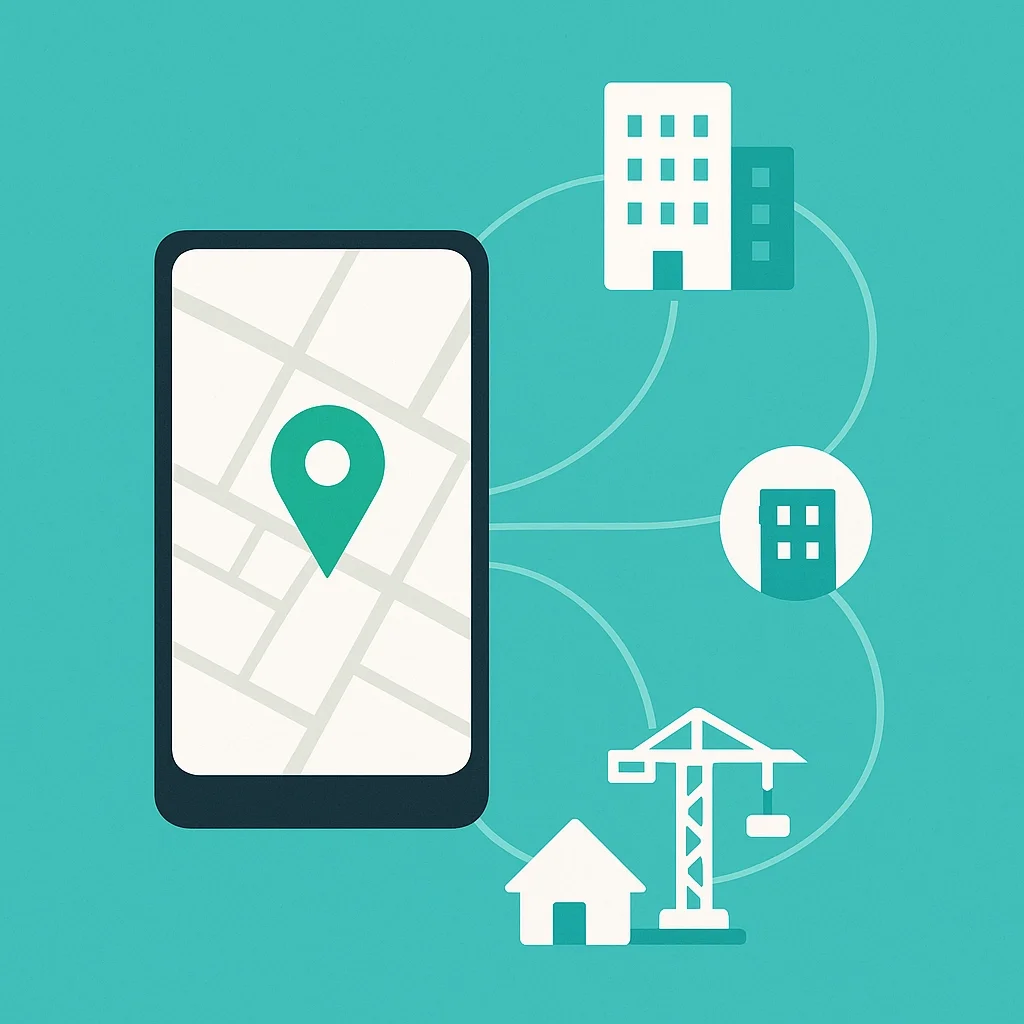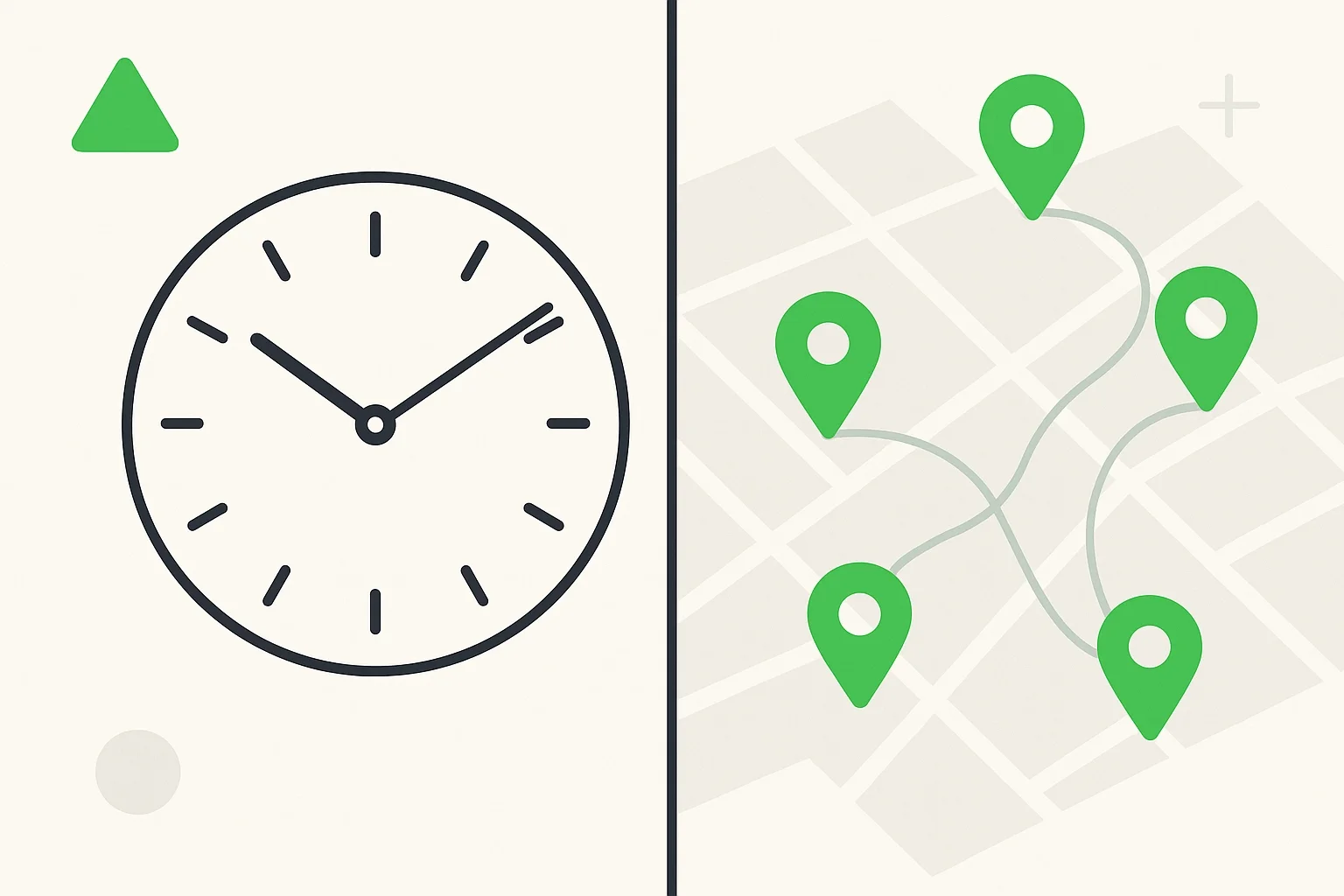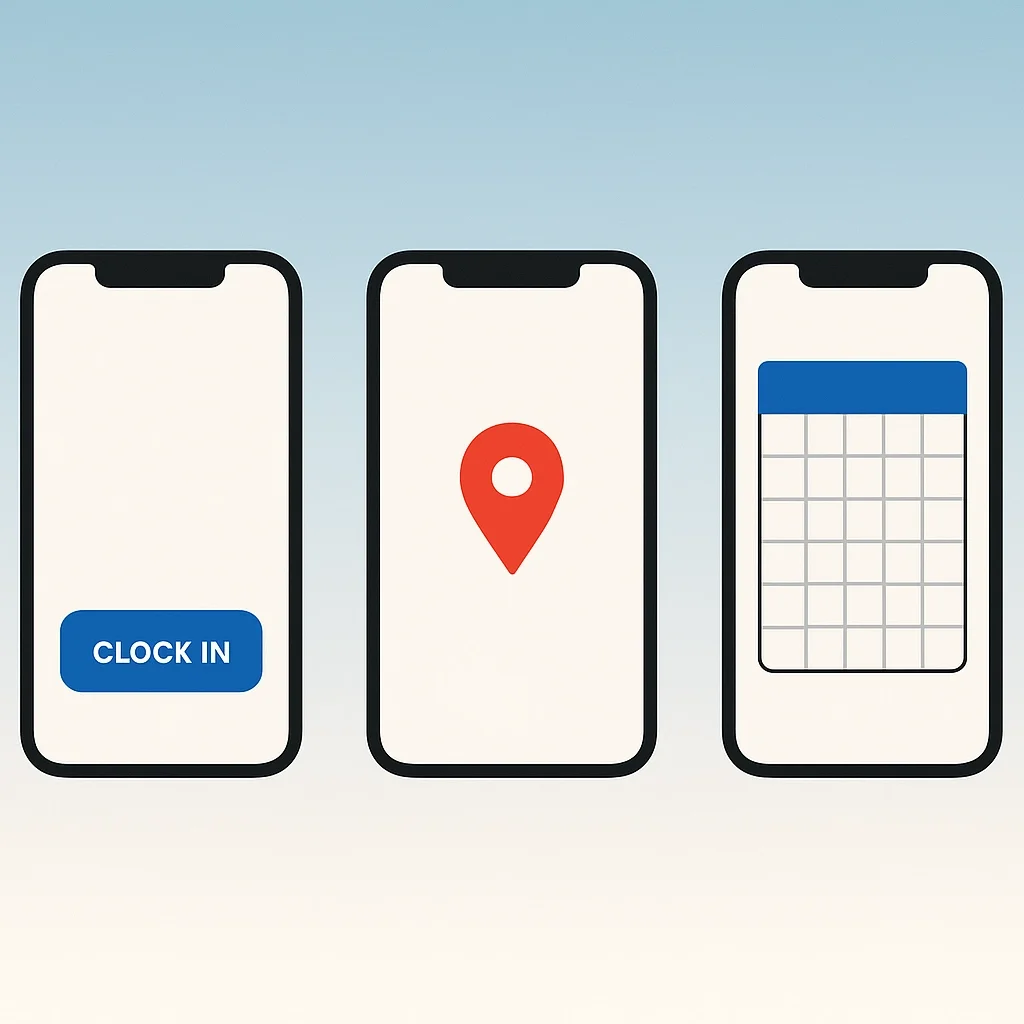Why Everyone Is Talking About GPS Time Tracking (And Your Remote Team Should Too)
GPS time tracking isn't just another workplace trend: it's solving real problems that cost businesses thousands of dollars every month. If you've been managing remote employees with paper timesheets or basic clock-in apps, you're likely losing money to inaccurate time reporting, buddy punching, and administrative headaches that eat up hours of your week.
The shift toward remote and field-based work has exposed major gaps in traditional time tracking methods. When your team isn't physically in one location, how do you know they're actually working when they say they are? How do you prevent the classic "I was stuck in traffic" excuse from turning a 6-hour workday into an 8-hour paycheck?
That's exactly why GPS time tracking has become the go-to solution for smart business owners who want accurate time records without turning into workplace surveillance officers.
What GPS Time Tracking Actually Does
GPS time tracking combines mobile time clocking with location verification. Instead of trusting employees to remember their exact start and end times, the system automatically records when someone arrives at a job site, how long they stay, and when they leave.
Here's how it works in practice: Your landscaping crew arrives at a client's property at 8:15 AM. Each team member opens their time tracking app and clocks in. The GPS automatically logs their location and timestamp. When they finish the job at 2:30 PM and clock out, the system records that too: along with any breaks they took and whether they left the job site during work hours.
The result? You get accurate time records without having to call and check on everyone or deal with handwritten timesheets that somehow always seem to favor round numbers like "exactly 8 hours."
This technology is particularly valuable for businesses that struggle with time and labor management across multiple locations or remote work situations.
The Real Problems GPS Time Tracking Solves
Buddy Punching and Time Theft
If you've never heard of buddy punching, consider yourself lucky. It's when one employee clocks in for another who's running late or didn't show up. With traditional time clocks, this costs U.S. businesses over $373 million annually according to the American Payroll Association.
GPS time tracking makes buddy punching impossible because employees have to be physically present at the work location to clock in. Try explaining to your boss why your timesheet shows you were working in downtown Phoenix while your phone's GPS has you at home in bed.
The "Creative Timesheet" Problem
We've all seen them: timesheets where every single day adds up to exactly 8.0 hours, despite the fact that traffic, weather, and client changes make it virtually impossible to have identical workdays. When employees fill out timesheets from memory (often days later), they tend to round up to the nearest half-hour or full hour.
A construction company we know discovered they were overpaying by an average of 2.3 hours per employee per week once they switched to GPS tracking. For a crew of 10 people at $25/hour, that's $575 in unnecessary labor costs every single week.
Administrative Time Drain
How much time do you spend collecting, reviewing, and fixing timesheets? If you're like most small business owners, it's probably 2-3 hours every payroll period. That's time you could spend growing your business instead of playing detective with employee time records.
GPS tracking apps eliminate most of this administrative burden by automatically generating accurate time reports that feed directly into your payroll system.
Why Remote Teams Specifically Need This
Visibility Without Micromanagement
Managing remote employees often feels like a guessing game. Are they actually working during business hours? Are they spending appropriate time on each project? GPS time tracking answers these questions without requiring constant check-ins or making employees feel like they're being watched every second.
For example, if you run a cleaning service with crews working at different locations, GPS tracking lets you see that Team A consistently finishes residential jobs in 2.5 hours while Team B takes 4 hours for similar properties. This data helps you identify training opportunities or adjust scheduling: not punish anyone.
Project Costing Accuracy
When you bid on new projects, you need to know exactly how long similar jobs actually take. Without accurate time tracking, you're essentially guessing. GPS time tracking provides the precise data you need to quote competitive prices while maintaining healthy profit margins.
A landscaping business owner told us that GPS tracking revealed his crews were spending 40% more time on maintenance jobs than he realized. He was able to adjust his pricing accordingly and increase profitability by 15% within three months.
Client Accountability
GPS time tracking also protects your business when clients question billing. Instead of relying on employee memory or handwritten notes, you have timestamped, location-verified records showing exactly when work started and ended at each location.
Real-World Implementation Scenarios
Scenario 1: The Landscaping Company
Sarah runs a landscaping business with 12 employees working across 30+ weekly client properties. Before GPS tracking, she spent every Monday morning reconciling timesheets, calling employees to clarify entries, and dealing with payroll discrepancies.
Now, her employees clock in when they arrive at each property and clock out when they finish. Sarah can see real-time progress on all jobs, automatically generate client billing reports, and process payroll in minutes instead of hours. Her landscaping crew scheduling became significantly more efficient.
Scenario 2: The Mobile Cleaning Service
Mike's cleaning company serves both residential and commercial clients. His biggest challenge was accurately tracking time spent at each location for billing purposes. Employees would estimate their time at the end of the week, leading to underbilling and unhappy clients questioning charges.
GPS time tracking solved both problems. Employees now automatically track time at each location, clients receive detailed reports showing exactly when service started and ended, and Mike's billing is both accurate and defensible.
Scenario 3: The Home Renovation Contractor
Jennifer manages renovation projects that often involve multiple subcontractors and crew members. Coordinating schedules, tracking labor costs per project, and ensuring everyone shows up when scheduled was a constant headache.
With GPS time tracking, she can see which crew members are on-site at any given time, track labor costs in real-time for each project phase, and get automatic notifications if someone fails to show up for a scheduled job. This visibility helps her manage multiple employees at multiple job sites more effectively.
Getting Started: Implementation Made Simple
Choose the Right Solution
Not all GPS time tracking apps are created equal. Look for solutions that offer:
Easy-to-use mobile apps that work offline
Automatic syncing when internet connection returns
Integration with popular payroll systems
Multilingual support if you have diverse teams
Reasonable battery usage that won't drain phones
Address Employee Concerns Upfront
Some employees worry about privacy when GPS tracking is introduced. Be transparent about what you're tracking (work location and hours) and what you're not (personal activities, off-hours location, detailed routes). Emphasize that accurate time tracking protects everyone: employees get paid correctly for their actual hours, and the business can operate more efficiently.
Many employees actually prefer GPS time tracking because it eliminates disputes about work hours and protects them from accusations of time theft. As discussed in our article about why employees prefer time tracking apps, the benefits often outweigh initial concerns.
Start with a Trial Period
Implement GPS time tracking gradually. Start with one crew or project, work out any technical issues, and demonstrate the benefits before rolling it out company-wide. This approach helps employees adjust to the new system and builds confidence in the technology.
The Bottom Line on GPS Time Tracking
GPS time tracking has become essential because it solves expensive, time-consuming problems that traditional methods can't handle. When your employees work across multiple locations or remotely, you need accurate, verifiable time records: not estimates and guesswork.
The technology pays for itself quickly through reduced time theft, eliminated administrative work, and more accurate project costing. For most small businesses, the monthly cost of a GPS time tracking system is less than what they lose to inaccurate timesheets in a single week.
If you're still relying on paper timesheets or basic time clocks, you're essentially flying blind when it comes to labor costs and employee productivity. GPS time tracking provides the visibility and accuracy you need to make informed decisions and protect your bottom line.
Ready to stop losing money to inaccurate time tracking? Sign up for Labor Sync and see how GPS time tracking can transform your business operations. Our multilingual platform makes it easy for diverse teams to track time accurately while giving you the real-time visibility you need to manage remote workers effectively.
For more insights on optimizing your business operations, check out our comprehensive guide on mobile workforce management and learn about the pros and cons of employee tracking apps to make informed decisions about your workforce management strategy.




